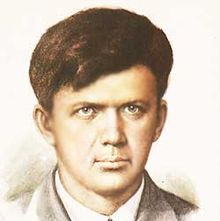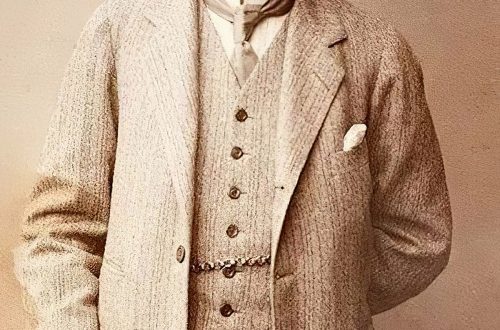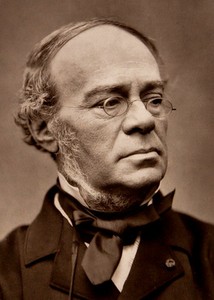
Alexander Alexandrovich Davidenko |
Alexander Davidenko
In Davidenko’s art there are no neatly written details, just as there are no images of individual people and characters, or the disclosure of deeply personal, intimate experiences; the main thing in it is something else – the image of the masses, their aspiration, upsurge, impulse … D. Shostakovich
In the 20-30s. Among Soviet composers, A. Davidenko, a tireless propagandist of mass song, a talented choir conductor, and an outstanding public figure, stood out. He was a composer of a new type, serving art for him was inextricably linked with active and tireless educational work among workers, collective farmers, Red Army and Red Navy men. Communication with the masses was a vital need and a necessary condition for his existence as an artist. A man of unusually bright and at the same time tragic fate, Davidenko lived a short life, not having time to realize all his plans. He was born into the family of a telegraph operator, at the age of eight he remained an orphan (later he was haunted by the haunting thought that he would share the fate of his parents who died young), from the age of 15 he began an independent life, earning lessons. In 1917, he, in his words, “gave a traction” from the theological seminary, where he was sent by his stepfather and where he was very mediocre in basic subjects, being carried away only by music lessons.
In 1917-19. Davidenko studied at the Odessa Conservatory, in 1919-21 he served in the Red Army, then worked as an orderly on the railway. An important event in his life was his admission in 1922 to the Moscow Conservatory in the class of R. Gliere and to the Choir Academy, where he studied with A. Kastalsky. Davidenko’s creative path was uneven. His early romances, small choral and piano pieces are marked by a certain gloominess of mood. They are autobiographical and undoubtedly connected with the difficult experiences of childhood and adolescence. The turning point came in the spring of 1925, when a competition was announced at the conservatory for the best “musical revolutionary composition” dedicated to the memory of V. I. Lenin. About 10 young composers took part in the competition, who then formed the core of the “Production team of student composers of the Moscow Conservatory” (Prokoll), created on the initiative of Davidenko. Prokoll did not last long (1925-29), but played an important role in the creative development of young composers, including A. Khachaturian, D. Kabalevsky, M. Koval, I. Dzerzhinsky, V. Bely. The main principle of the collective was the desire to create works about the life of the Soviet people. At the same time, much attention was paid to the mass song. At that time, this term, along with the concept of “mass singing”, meant a polyphonic choral performance.
In his songs, Davidenko creatively used the images and musical techniques of folk songs, as well as the principles of polyphonic writing. This was already evident in the composer’s first choral compositions Budyonny’s Cavalry (Art. N. Aseev), The Sea Moaned Furiously (Folk Art), and Barge Haulers (Art. N. Nekrasov). In 1926, Davidenko implemented his idea of “democratization of sonata and fugue forms” in the choral sonata “Working May”, and in 1927 he created an outstanding work “The Street is Worried”, which was part of Procall’s collective work – the oratorio “The Way of October”. This is a lively colorful picture of the demonstration of workers and soldiers in February 1917. The form of the fugue here is strictly subject to artistic design, it is designed to express the organized elements of the many-voiced revolutionary street.
All music is permeated with folk color – workers’, soldiers’ songs, ditties flash, replacing each other, combining with the main theme, framing it.
The second pinnacle of Davidenko’s work was the choir “At the tenth verst”, dedicated to the victims of the revolution of 1905. It was also intended for the oratorio “The Way of October”. These two works complete the activities of Davidenko as the organizer of the Procall.
In the future, Davidenko is mainly engaged in musical and educational work. He travels around the country and organizes choir circles everywhere, writes songs for them, collects material for his works. The result of this work was the “First Cavalry, Song about the People’s Commissar, Song about Stepan Razin”, arrangements of songs of political prisoners. The songs “They wanted to beat us, they wanted to beat us” (Art. D. Poor) and “Vintovochka” (Art. N. Aseev) were especially popular. In 1930, Davidenko began work on the opera “1919”, but this work as a whole turned out to be unsuccessful. Only the choral scene “Rise of the wagon” was distinguished by a bold artistic conception.
The last years of his life Davidenko worked furiously. Returning from a trip to the Chechen region, he creates the most colorful “Chechen Suite” for a cappella choir, works on a large vocal and symphonic work “Red Square”, takes an active part in musical and educational work. Death lay in wait for Davidenko literally at the combat post. He died on May 1 after the May Day demonstration in 1934. His last song “May Day Sun” (art. A. Zharova) was awarded a prize at the competition of the People’s Commissariat of Education. Davidenko’s funeral turned into an unusual for such a ritual concert of mass song – a powerful choir of students of the conservatory and amateur performances performed the best songs of the composer, thus paying tribute to the memory of a wonderful musician – an enthusiast of Soviet mass song.
O. Kuznetsova





